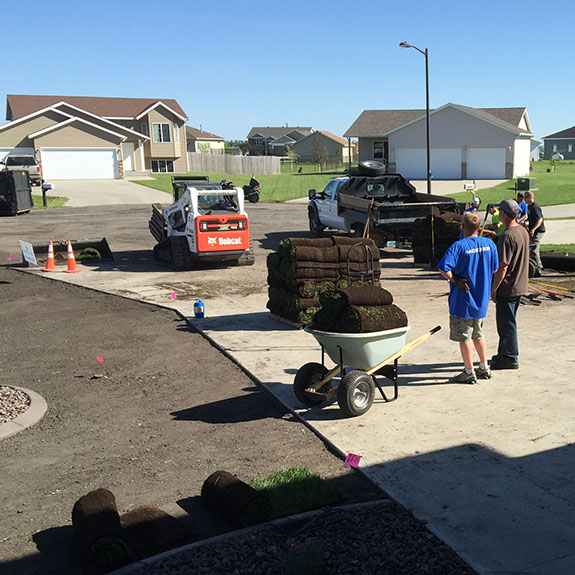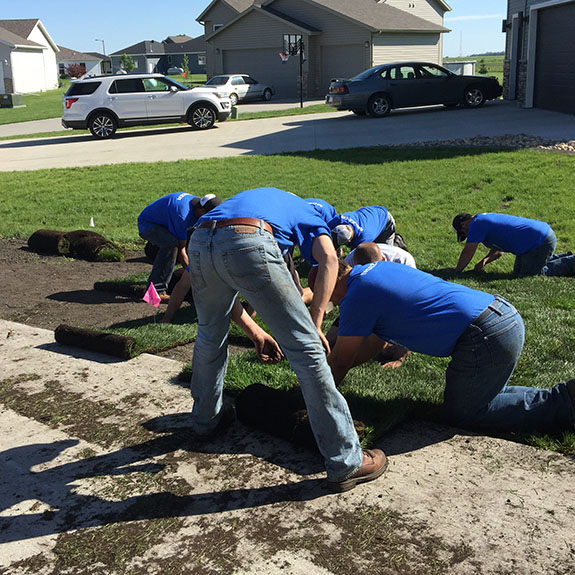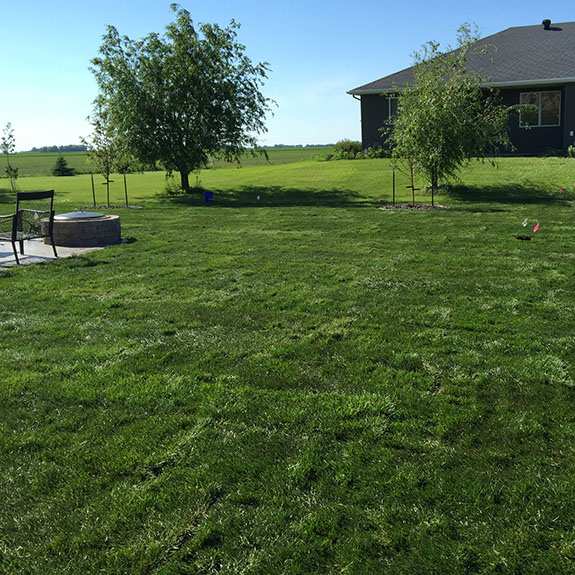
Sod
Need green? Consider sod installation for your new yard to achieve that almost-immediate satisfaction of a luscious lawn.
If you need additional guidance on maintaining your new lawn, feel free to contact our office anytime, or read below for a list of industry tips and tricks. We have also added a Q and A section at the bottom of this page to answer some of those common questions.
TIP #1
Water early in the morning to promote “deep watering” root growth.
TIP #2
Mow often enough so you do not cut more than 1/3 of the leaf blade off. (Cutting more than 1/3 of the blade can remove vital nutrients from the plant and burn your grass.)
TIP #3
Start a weed and feed program (most of our customers prefer 2 to 3 applications of 2-4D and an initial granular fertilizer boost each spring.
TIP #4
Power-rake and aerate your yard regularly to reduce compaction and promote new grass growth. Most of our customers choose a “spring clean-up” service in the spring that includes a thorough power-raking to remove excess thatch after the winter months. Aeration (and overseeding) can be helpful at any point throughout the summer.
Q: Are there different types of sod grass that I can request?
A: Yes. There are two prominent types of sod used in the Fargo-Moorhead region (and elsewhere in North Dakota). The first type of sod is referred to as “peat sod”. Peat sod is grown in a lighter peat mixture soil that is easier to install and obtains a rich green color for beautiful-looking lawns, but they are not recommended for high traffic areas. Mineral or “dirt” sod is grown in a more dense soil base, making it harder to install due to the weight, but allowing much more forgiveness when the yard needs to tolerate high usage (kids, pets, parties, etc).
Q: Are there any advantages of sod over other types of lawn installation?
A: Sod offers a quick fix for those homeowners anxious to get in their yards as soon as possible. NOTE: It is still not recommended to fully use a lawn until a good two to three weeks have gone by after installation, to allow the roots to start becoming established. Sod also allows homeowners to get a jumpstart on growing grass before those pesky weeds take over.
Q: Should I add dirt before installing my new sod?
A: Our best recommendation (especially in the Fargo-Moorhead region) is to add a healthy 1/2″ to 1″ of top soil to your new rough grade before sodding or seeding. New grass seed likes to root in about four inches of quality soil conditions. This can be an expensive addition to your new yard, so if it does not work with your budget, it is best to at the very least invest in an irrigation system and start one of our custom weed control and fertilizer regimens.
Q: How soon can I mow my new sod?
A: New sod can usually be mowed after two or three weeks (the amount of time it generally takes for the sod to become rooted in the soil. We recommend using a higher mower setting that first two or three times also. This will “shock” the grass and expedite the rooting process, without losing those crucial nutrients in the grass blade that is being removed.
. . .
Our staff has developed a nifty Project Planning Guide for your reference if you want to start doing a little research of your own before you hire a professional contractor to get the job done for you. We welcome any thoughts, comments or questions from our fans! Let us know if you have any other tips and tricks you’d recommend for someone looking for services.



We Build Long Lasting Relationships
Sandy S
